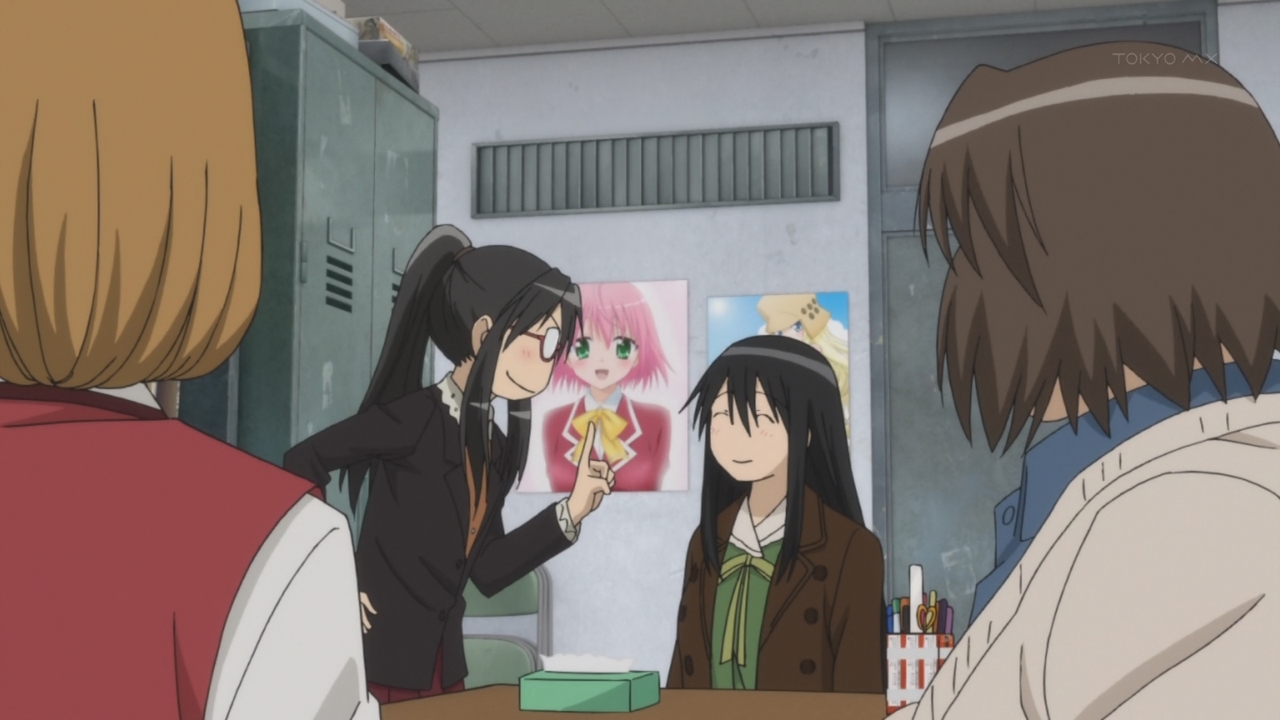Or: “How To Run An Anime Club Like Char Aznable”
I ran my college’s anime club for the better part of 4 years. During my administration, the anime club grew into the biggest club on campus, and one of the most successful and well-liked by the faculty, staff, and administration.
This was a result of the club’s strong leadership, which comprised not only me, but the club’s other officers, as well as prominent members, and of the unorthodox techniques we used in running the club.
To accomplish this method of leadership successfully, the club’s leadership (mostly the president), must have the following qualities:
Commitment. An anime club easily takes just as much effort to run as any other kind of club in a college setting. Leaders must be committed to the club’s success.
Courage. An anime club leader must have the courage of his or her convictions. As the outward face of the club, the leader will often be called upon to explain the medium to outsiders. It’s important they be able to do this effectively.
Charisma. A charismatic leader will find both rallying his or her club in the right direction and interfacing with those outside the club much easier.
Passion for anime. An anime club’s leader should be one of the most passionate people in the club, and should be the medium’s biggest advocate. In addition, he or she must be free of shame around loving anime.
These strategies and tactics were developed in a college anime club setting, but can easily be adapted for other structures.
Know Your Key Members
Within every anime club, there are two groups, not including the club’s staff: The people who actively want to do stuff, and everyone else.
Take note of the people who actively want to do stuff. These are often the people making suggestions, regularly bringing in anime to watch, and stepping up to participate in events. Cultivate a relationship with these people, as they often have valuable input.
Use “The Illusion of Choice”
If a decision is to be put to a vote, narrow it down to an A/B choice within your club’s leadership outside of a club meeting before bringing to the members to vote on.
Contrast “Should we have sandwiches or pizza at the event?” versus “What kind of food should we have at the event?” The latter results in a discussion, and I’ve seen that kind of question bog down meetings of clubs I wasn’t in charge of.
If the decision is narrowed down to two reasonable options, the members will vote on whichever they like better and everything’s all set. In addition, it can often be advantageous to determine certain details entirely within the club’s leadership (Again, outside of a club meeting) without calling for a member vote at all. Again, if the conclusion is reasonable, the members aren’t likely to mind.
Do Right What Other Clubs Do Wrong
Endear yourselves to the governing body that oversees your club and other clubs by making their jobs easy. Be intimately familiar with the rules and regulations your club must abide by. Observe which ones are necessary to follow to the letter, versus which ones are only in place to prevent mistakes other clubs make, but that yours doesn’t. The latter are the ones you may be able to bend or skirt to your advantage.
In addition, being observed doing things the right way gives your club a positive reputation that you can leverage.
Example 1: Our anime club had a reputation of making very clear posters that followed the Student Programs guidelines to the letter. This was reinforced when the women’s leadership club used the same template as our anime club to promote one of their events.
Example 2: The videogame club had been instructed by Student Programs to purchase a license to cover the school legally for public game nights and tournaments. The videogame club avoided making that purchase for months, alleging that they were being singled-out by Student Programs.
Our anime club, also wanting to host game nights, wrote a proposal to Student Government, suggesting use of StuGov funds to purchase the license, as it would benefit the entire school. The proposal was accepted unanimously, and, to my knowledge, the license is renewed every year.
Overestimate Your Expenses
This is simple: Allocate more money for purchases than you think you will actually need. This will result in the club running a surplus, which you can use for additional events or purchases.
Network With Other Clubs
Be creative and come up with ways the anime club can help other clubs and integrate with their events. In addition, create events that other clubs can latch onto. This helps form a relationship with other organizations and makes the anime club look like a team player.
Eliminate Toxicity (With Extreme Prejudice)
Don’t permit negativity of any kind to take root in the club. This includes negativity toward certain kinds of anime. If viewings are determined democratically and someone doesn’t want to watch what’s been voted on, they can leave. If they stay and complain, they require a talking-to. If the negative behaviour persists, you have the right and the duty to kick them out.
Often, however, if you create an environment that’s too positive to bend to their negative behaviour, they’ll leave by themselves and never come back.
Go Hard On Promotion
At promotional events (Student orientation, etc.), fill your club’s table with anime figures and set up a laptop playing anime, connected to a monitor facing outward. Anyone into anime will make a beeline for your table and you can pitch the club to them.
By operating with these techniques, your club will be able to, as they say, “Ask forgiveness, not permission.” The key is to gain the trust of the administration by following the rules, while also building a reputation for being a somewhat renegade, but highly organized, streamlined, and positive club.
Do it right and you’ll be able to do whatever you want (Within reason).





